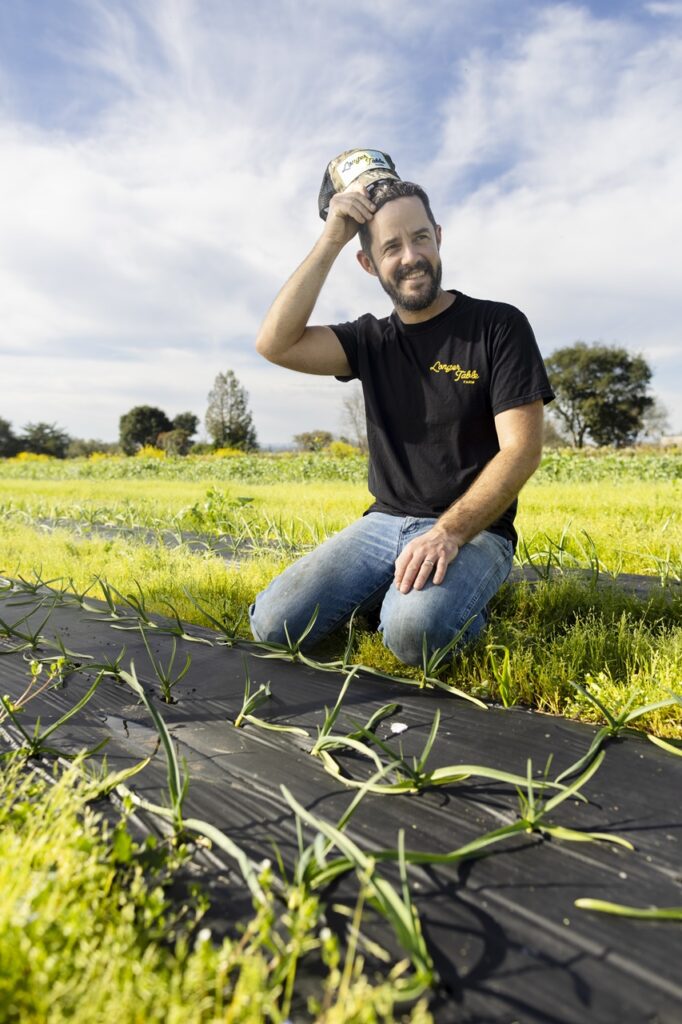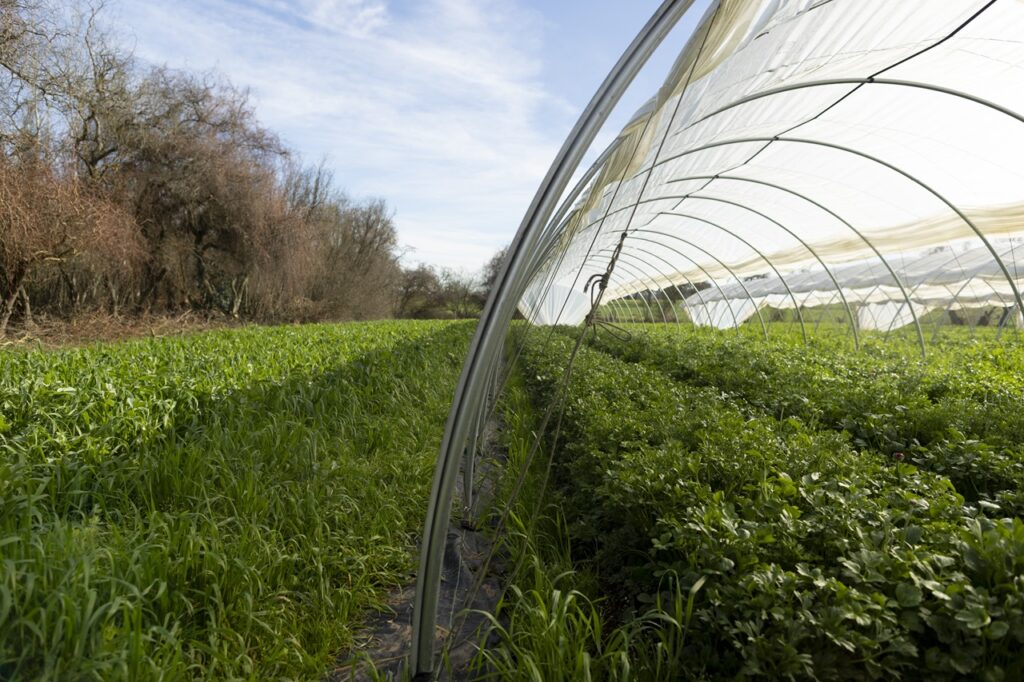Can Sonoma County Even the Playing Field of Agricultural Equity?
PHOTOS: PAIGE GREEN
Small-scale farmers are inherently resourceful. They have to be. Often operating on a shoestring budget, they make the most of what they have: stacking functions, repurposing materials, taking a tool designed for one task and, after a bit of welding and duct tape, jury-rigging it until it can accomplish a dozen different tasks.
But lately, some local farmers, especially those who don’t own their own land, are beginning to question that ingenuity, wondering if even they can repurpose one big multi-million-dollar tool in particular: Ag + Open Space, otherwise known as the Sonoma County Agricultural Preservation and Open Space District.
Founded in 1990, the county agency is tasked with “preserving agricultural and open space lands as a legacy for future generations.” At a time when rural communities elsewhere in California were being paved over (Silicon Valley, not so long ago, was the Valley of Heart’s Delight, lush with fruit orchards), residents here began fearing that it was only a matter of time before Sonoma County resembled San Jose. But it wasn’t just the scenery voters wanted to protect; they saw inherent value in “supporting diverse, sustainable, and productive agriculture.” Sonoma County citizens voted to approve a quarter-cent sales tax to fund a real estate tool called a conservation easement. When a landowner faces pressure to develop or subdivide their property, Ag + Open Space steps in, offers to purchase the rights to develop or subdivide that land, then extinguishes those rights: the property owner still owns the land and in many cases, they can still farm it, graze it, plant orchards or even put up a milking barn. What’s gone, even if that property changes hands, is the right to carve it up or pave it over with sprawling suburbia.
Conservation’s Price Tag
But those rights don’t come cheap. Suburbia, whether we like it or not, is a far more lucrative use of land than apples, kale or even wine grapes. The value of that easement is based on the value of the development rights it extinguished, as determined by an independent appraiser. While Ag + Open Space would never tout itself as a socialist bulwark against the ravages of free market capitalism, in essence, what these easements do is use taxpayer dollars to eliminate development rights—and in most cases helping the original owners stay on their land—all for the sake of the public good.
Yet unlike Soviet-style land redistribution, these public resources aren’t doled out among a mass of smallholder farmers. Instead, because Ag + Open Space prioritizes large-acreage properties, this program results in payments to just a handful of landowners who, in exchange, simply agree to not develop their vast holdings. Last year alone, they closed on a total of just six easements totaling more than $30 million. One recipient recently received over $11 million for a single property’s rights.
On Shaky Ground
Will Holloway, who grows 10 acres of organic vegetables outside Santa Rosa, is not among them. Born and raised in Sonoma County, he’s seen firsthand the consequences of rural development and subdivision, so he’s grateful that Ag + Open Space has helped protect over 122,000 acres of land in his lifetime alone. He just wishes a little of that money could be spent helping farmers like him access land too. Because Will, like many newer and small-scale food producers in this county, leases his land.
Will started his operation, Longer Table Farm, on a handshake. With nothing in writing, he leased a couple of acres on his parent’s landlord’s property. The arrangement wasn’t exactly secure, but it sufficed as he bootstrapped his fledgling enterprise. As his business grew, however, he knew he’d need more land and more security too. A couple years later, a lucky break led him to a property owned by the City of Santa Rosa, which he’s been leasing ever since.
But even there, where he now employs up to a dozen people and sells vegetables to local businesses, nothing is certain. Each year, he invests more time and money into a business that, in so many ways, is inextricably tied to land he doesn’t own. Every time he renews that lease, he can’t help but wonder whether it’ll be the last time, whether the price will skyrocket, or how much equity will be lost if he’s forced to vacate. While Ag + Open Space steps in to prevent the ravages of the free market for its easement holders, Will and farmers like him must still compete in a county where real estate agents are indifferent as to whether a six-acre ranchette goes to someone growing food for their local community or to a Silicon Valley retiree seeking bucolic golden days on an ever-appreciating asset.
The challenge, as Will and many others—even those at the district itself—are beginning to realize, can be found in the name: Agricultural Preservation and Open Space. When one preserves, say, a cucumber into a pickle, there’s an existing crop that’s being secured. But at a time when we’re losing farms and farmers at an alarming rate, is preservation alone enough? If there are only so many cucumbers left to pickle, some are wondering whether we should focus on planting new seeds too.
The reverence of preservation also assumes that the status quo should be worth taxpayer dollars without some accounting for who’s been left out. Hundreds of years of discrimination and policy have resulted in increasingly consolidated farmland ownership with demographics that don’t match the diversity of this country (white Americans own more than 98% of U.S. farmland). Ag + Open Space doesn’t collect racial information on easement holders, but statistically speaking, based on who owns the sprawling properties whose rights they prefer to purchase, it’s safe to say that few, if any, of those public payouts are helping farmers of color stay where they are.
Farmland for All?
In the past few years, however, Ag + Open Space has begun to grapple with these complexities and the limits of what they can and can’t do. Because their funding is tied to a tax measure, the district can’t legally stray much from what voters passed way back in 1990, which the organization claims prevents more creative uses of those public funds. Last year, they collaborated on a study called Land Access & Land Tenure for Limited Resource Farmers, which offered several recommendations. But few of those ideas can actually be carried out by the district, at least not in its current iteration or without significant outside support.
“Equitable land access,” says Ag + Open Space director Misti Arias, “is a complex, multi-faceted issue that cannot be addressed by one entity alone.”
All of this has led to their new Farmland for All initiative, which aims to “help increase equitable, affordable farmland access.” But even if innovative tools do exist to help incubate new and more diverse farmers in Sonoma County, can Ag + Open Space actually put them to use? Who else must step up to collaborate? Where will their funding come from? Will Sonoma County voters, who will need to reauthorize Ag + Open Space funding in 2031, have the appetite to redirect even just some of their tax dollars towards these goals as well as preservation? Would duct tape help?
We’ll explore these questions and examine possible solutions to farmland access in Sonoma County in the second half of this two-part series, in the May/June edition of Made Local Magazine.
Evan Wiig is a writer, soil lover, and advocate with Community Alliance with Family Farmers based in Santa Rosa.





